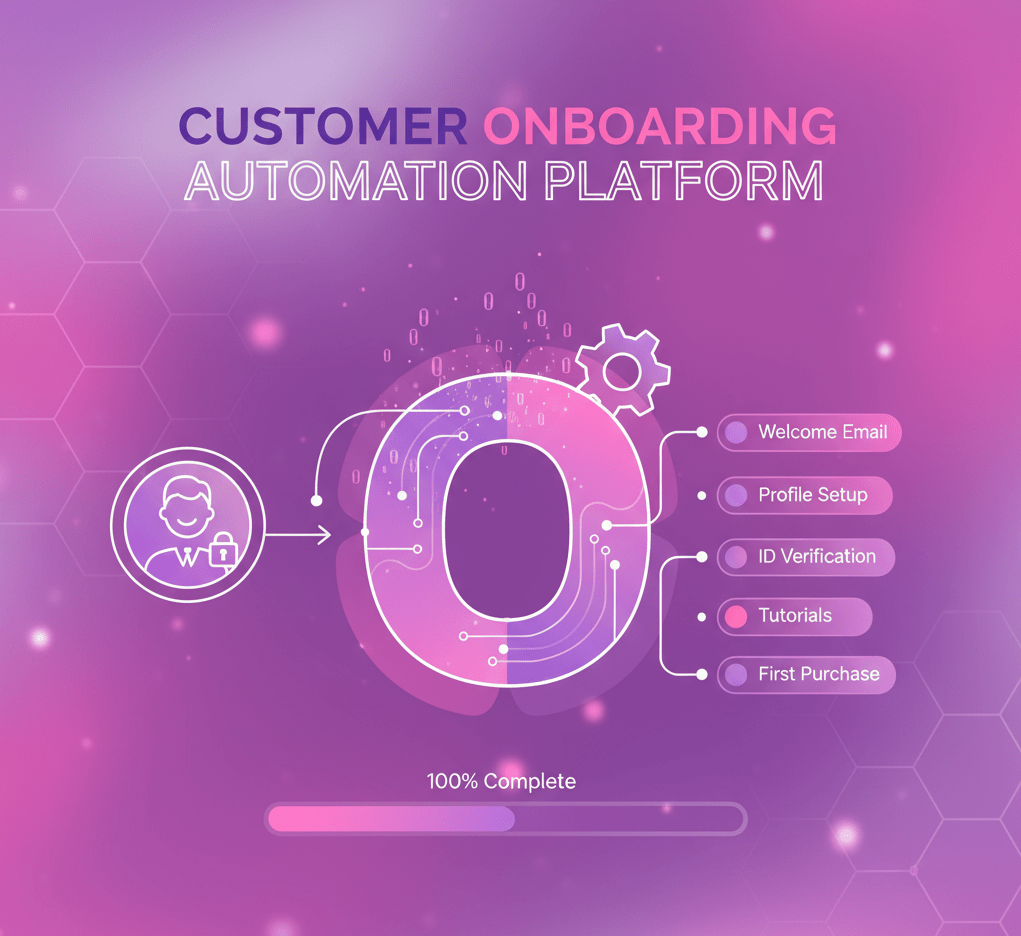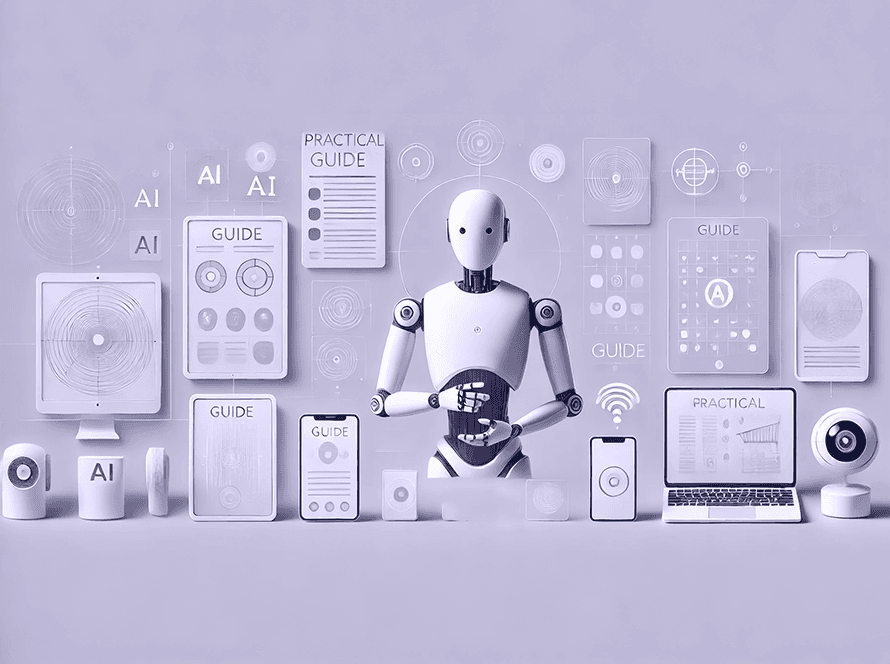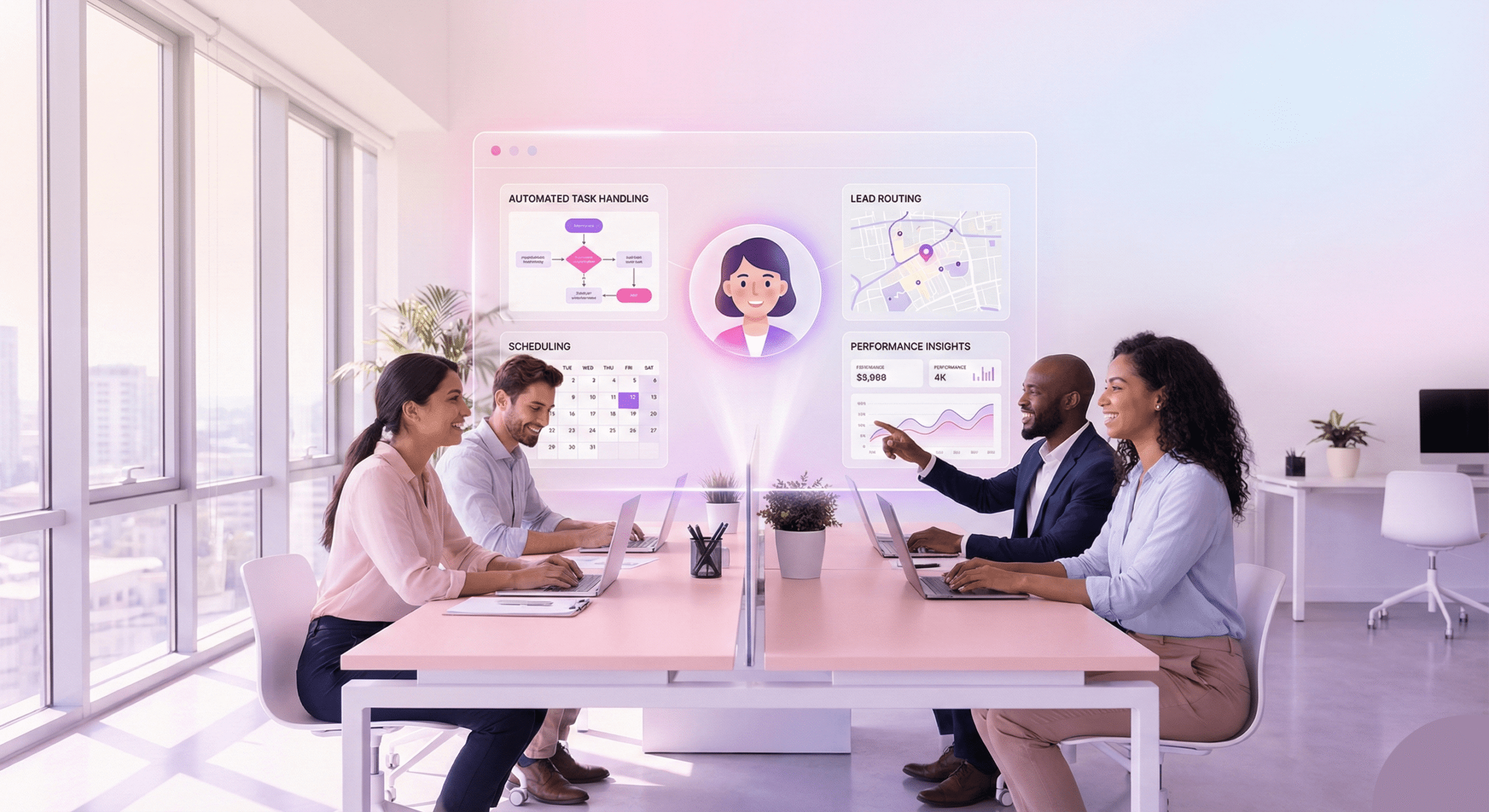“Empower your CSMs and reduce churn with the Customer Onboarding Automation Platform that uses AI to automate scheduling, welcome calls, and follow-ups.”
Bringing on new customers is exciting. It’s the start of a new relationship, full of promise and potential. Yet, for businesses committed to a “high-touch” approach, where personalization and dedicated support are paramount, scaling this process can feel like a daunting tightrope walk. You want every new client to feel valued, understood, and quickly see the benefits of working with you. But how do you deliver that consistent, personalized experience when your team is stretched thin and your customer base is growing?
This isn’t just about efficiency; it’s about safeguarding the very essence of your customer relationships. A clumsy onboarding experience, even for a high-value client, can sow seeds of doubt. It can delay their time to value, leading to frustration and, ultimately, early-stage churn. The good news? You don’t have to choose between personalization and scalability. There’s a more innovative way.
This article outlines a clear framework. We will show you how to map your existing onboarding journey. We will pinpoint key areas where automation can lighten the load. We will highlight how you can supercharge your human Customer Success Managers (CSMs) with the power of AI. This creates a powerful, hybrid approach. Finally, we’ll introduce you to SalesCloser.ai, the platform designed to bring this vision to life. Its AI agent acts as your tireless onboarding coordinator, ensuring every new client gets a consistent, professional, and genuinely personal experience. This accelerates their time-to-value without overwhelming your internal teams.
Let’s dive in.
The High-Touch Imperative: Why Personalization Matters More Than Ever
In today’s competitive landscape, merely acquiring a customer is no longer enough. Keeping them, nurturing them, and turning them into advocates is the real challenge. High-touch service, characterized by individualized attention, proactive support, and a deep understanding of client needs, is a powerful differentiator. It builds loyalty. It fosters trust. It demonstrates genuine commitment.
Think about it. When a new client joins, they’ve invested in your solution. They have expectations. They need guidance. A high-touch approach addresses these needs head-on. It makes them feel heard. It shows them you care about their success. This is crucial for complex products. It’s vital for B2B services. It’s essential for any offering where the client’s success directly impacts your own.
However, delivering this level of service manually, as your customer base expands, becomes a logistical nightmare. Your CSMs, the frontline heroes of customer success, get bogged down. They spend precious hours on repetitive tasks. These tasks include scheduling, sending reminders, and making introductory calls. This takes them away from higher-value activities. These activities include strategic planning, relationship building, and problem-solving.
This creates a paradox. You want to offer personalized service. But the very act of scaling it threatens to erode that personalization. It can lead to an inconsistent experience. It can cause delays. It can even lead to burnout for your team.
So, how do you break free from this cycle? The answer lies in intelligent automation.
Mapping Your Customer Onboarding Journey: The Foundation of Success
Before you automate, you must understand. The first step to a truly effective onboarding process, whether high-touch or not, is to map the entire customer journey meticulously. This isn’t just a flowchart. It’s a detailed blueprint of every interaction. It covers every milestone. It considers every potential roadblock a new customer might encounter.
Gather your team. Involve your sales, customer success, product, and even marketing departments. Each brings a unique perspective. Document every stage. From the moment a deal closes to the point where the customer is fully integrated and deriving maximum value.
Here are key stages and questions to consider:
- Pre-Onboarding (Deal Closed – Welcome): What happens immediately after the contract is signed? Who makes the first contact? What information needs to be collected? What internal handoffs occur?
- Initial Welcome & Introduction: How do you greet your new client? Do you send a welcome kit? Is there a welcome call? Who conducts it? What is the primary goal of this first interaction?
- Discovery & Goal Setting: How do you understand the client’s specific needs? How do you define their success metrics? Is there a kickoff meeting? What preparation is needed for it?
- Implementation & Configuration: What steps are involved in setting up the client? Are there technical requirements? Who manages this process? Are there regular check-ins?
- Training & Adoption: How do you educate the client on using your product or service? Are there training sessions? Do you provide resources? How do you track their progress?
- Initial Value Realization: How do you confirm the client is getting value? What milestones indicate early success? How do you celebrate these achievements?
- Ongoing Support & Relationship Nurturing: What’s the plan after the initial onboarding? How do you ensure continued success?
For each stage, identify:
- Key Actions: What needs to happen? (e.g., Send welcome email, Schedule kickoff call, Provide login credentials, Conduct training session).
- Responsible Parties: Who owns this action? (e.g., CSM, Sales Rep, Technical Support).
- Customer Touchpoints: Where does the customer interact with you? (e.g., Email, Phone call, Video conference, Portal).
- Required Resources: What materials are needed? (e.g., Welcome guide, Training modules, Contract details, FAQs).
- Potential Bottlenecks: Where do delays typically occur? What are common customer questions or points of confusion?
This detailed mapping will serve as your north star. It exposes inefficiencies. It highlights areas ripe for improvement. Crucially, it helps you identify which touchpoints are truly “high-touch” and require human intervention, versus those that are repetitive and perfect candidates for automation.
Identifying Automatable Touchpoints: Where AI Can Shine
Once your journey map is complete, you’ll see patterns. You’ll notice tasks that are essential but consume valuable human time, requiring neither complex problem-solving nor deep empathy. These are your prime candidates for automation. The goal isn’t to replace your CSMs. It’s to free them from the mundane. It allows them to focus on what they do best: building relationships and solving complex client challenges.
Here are common automatable touchpoints in a high-touch onboarding process:
- Automate Welcome Calls: Every new client deserves a warm and welcoming experience. A human touch here is excellent, but what if that initial “hello” could be automated? An AI agent can make a polite, professional welcome call. It can confirm key details. It can set the stage for the next steps. This ensures that every client receives immediate and consistent outreach. Your CSMs can then follow up with more strategic conversations.
- Scheduling a Series of Training or Kickoff Meetings: Coordinating schedules across multiple stakeholders is notoriously time-consuming. Sending emails back and forth. Suggesting times. Confirming. This entire dance can be automated. An AI can handle this seamlessly. It can find mutually agreeable times. It can send calendar invites. It can manage rescheduling requests. This dramatically reduces administrative overhead. It also speeds up the process of scheduling those critical early meetings.
- Follow-up Reminders for Documentation or Information Collection: Do you need specific paperwork? Do you need setup details? Are there forms to be completed? Manually chasing these up takes effort. An AI agent can send automated, personalized reminders. It can track completion. It can gently prompt clients without your team having to lift a finger. This ensures all necessary information is gathered promptly.
- Proactive Customer Support & Nudges: Beyond direct requests, automation can enable proactive support. If a client hasn’t logged in after a specific period, an automated message or call can be used to check in with them. If a key feature remains unused, a targeted tip can be sent to the user. To the user, this prevents minor issues from escalating into major problems. It shows you are actively engaged in their success.
- Onboarding Checklist Automation: Many onboarding processes involve a series of steps. Creating and managing these checklists can be automated. As a step is completed, the system can trigger the following action. This could be sending a resource. It could be prompting the CSM for a check-in. It ensures no step is missed. It provides a clear path for the customer.
- Setting Expectations Early: Clear communication is vital. Automated messages can consistently reinforce expectations. They can outline the onboarding timeline. They can highlight key milestones. They can even pre-empt common questions. This reduces anxiety for the customer. It also reduces the number of inbound inquiries for your team.
By automating these logistical heavy lifters, you achieve several critical outcomes:
- Streamline Client Onboarding: The entire process becomes smoother and faster.
- Improve New Customer Experience: Customers receive timely, consistent, and professional interactions.
- Reduce Time to Value: Clients get set up and start seeing results faster.
- Reduce Early-Stage Churn: A positive and efficient onboarding experience minimizes the risk of early-stage dissatisfaction.
- Scalable Onboarding Process: You can handle more new clients without proportionally increasing your team’s workload.
This strategic application of automation allows your human CSMs to focus on the high-value, empathetic interactions that truly define a “high-touch” service.
Augmenting Human CSMs with AI: The Hybrid Advantage
Here’s the core strategy: AI isn’t here to replace your Customer Success Managers. It’s here to empower them. Think of AI as an incredibly efficient, tireless, and always-on administrative assistant for your CSMs. This hybrid approach combines the best of both worlds: the efficiency and consistency of AI with the empathy, strategic thinking, and relationship-building prowess of your human team.
Your human CSMs remain the architects of the customer relationship. They develop the strategy. They provide tailored advice. They resolve complex issues. They build rapport. These are uniquely human capabilities. These are things AI cannot replicate.
However, consider the typical day of a CSM without automation:
- Morning: Reviewing emails, responding to scheduling requests, chasing outstanding documentation.
- Mid-morning: Making initial welcome calls, some of which go to voicemail.
- Lunch: Trying to coordinate schedules for a kickoff meeting with multiple client stakeholders.
- Afternoon: Preparing for a training session, sending follow-up resources.
- Late Afternoon: Realizing a client hasn’t progressed through their onboarding checklist and needs a nudge.
A significant portion of this time is devoted to coordination, communication, and administration. These are tasks that, while necessary, don’t require the strategic insight or emotional intelligence of a human CSM.
Now, imagine this scenario with AI augmentation:
- Morning: The AI has already sent all welcome messages, scheduled all initial calls, and proactively collected most of the documentation. The CSM reviews reports from the AI, identifying any clients who need specific human intervention.
- Mid-morning: The CSM attends a strategic planning meeting with a key client, aiming to build a deeper understanding of their long-term goals. The AI is autonomously scheduling the following sequence of training sessions for a new client.
- Lunch: The CSM enjoys a productive break, knowing the AI is managing all meeting coordination.
- Afternoon: The CSM conducts a high-impact training session. The AI then automatically sends tailored follow-up resources based on the content of the session.
- Late Afternoon: The AI flags a client who needs a personalized check-in from the CSM, having already sent a gentle automated reminder. The CSM can then make a targeted, informed call.
This isn’t a pipe dream. This is the reality that a robust customer onboarding automation platform delivers. It shifts your CSMs’ focus from reactive administrative tasks to proactive, high-value client engagement. This means more engaged CSMs. It means more satisfied customers. It means better business outcomes.

Introducing SalesCloser.ai: Your Ideal Onboarding Automation Platform
Now that we’ve established the framework, let’s talk about the solution. Enter SalesCloser.ai, a cutting-edge platform specifically designed to execute this hybrid, high-touch onboarding strategy. SalesCloser.ai isn’t just another automation tool. It’s an intelligent AI agent that seamlessly integrates into your existing workflows. It acts as a tireless onboarding coordinator, ensuring every new client receives a consistent, professional, and genuinely personal experience.
What sets SalesCloser.ai apart is its ability to go beyond simple email automation. Its AI agent can:
- Place Warm Welcome Calls: Imagine every new client receiving a professional, friendly welcome call within minutes of signing up. SalesCloser.ai’s AI agent can initiate these calls on your behalf. It can confirm details. It can answer basic questions. It can set the stage for their onboarding journey. This makes a strong first impression. It ensures a consistent “hello” every time.
- Autonomously Schedule the Entire Sequence of Necessary Meetings: This is where SalesCloser.ai truly shines. Forget the endless back-and-forth emails. The AI agent can manage the complete scheduling lifecycle. This includes initial kickoff meetings, training sessions, technical deep dives, and regular check-ins. It interacts with your clients. It finds optimal times. It sends calendar invites. It handles reschedules. It frees your CSMs from this administrative burden entirely.
- Manage Follow-ups: Whether it’s a reminder for documentation, a prompt to complete a setup step, or a check-in after a training session, SalesCloser.ai’s AI agent handles all follow-ups. It ensures nothing falls through the cracks. It keeps the onboarding momentum going. This reduces delays. It provides a smooth progression through the journey.
- Provide Proactive Communication: The AI can monitor client progress and provide timely updates to ensure effective communication. It can identify potential sticking points. It can then trigger proactive communications. This could be a helpful tip. It could be an offer of support. It ensures clients never feel lost or forgotten.
- Integrate with Your CRM and Calendars: SalesCloser.ai is built for seamless integration. It works with your existing CRM to pull client data. It syncs with your team’s calendars to manage scheduling efficiently. This means minimal disruption to your current tech stack. It means a smooth transition to an automated onboarding process.
Realizing the Benefits of SalesCloser.ai
Implementing SalesCloser.ai translates directly into tangible benefits for your business:
- Faster Time to Value: By automating crucial early steps and accelerating meeting scheduling, clients get set up and start realizing value from your product or service much quicker. This reduces frustration. It builds early confidence.
- Consistent Customer Experience: Every new client receives the same high standard of initial communication and coordination. No more missed welcome calls. No more delayed follow-ups. This consistency builds trust and reinforces your brand’s commitment to service.
- Reduced Early-Stage Churn: A smooth, professional, and proactive onboarding experience significantly mitigates the risk of clients feeling neglected or overwhelmed in their initial stages. This directly impacts your retention rates.
- Empowered Customer Success Managers: Your CSMs are freed from administrative tasks., allowing them to focus on delivering exceptional customer experiences. They can dedicate their time and expertise to strategic engagement. They can build stronger relationships. They can solve more complex client challenges. This leads to higher job satisfaction for your team. It also leads to more impactful customer interactions.
- Increased Scalability: Your business can onboard a significantly larger volume of new clients without needing to expand your CSM team proportionally. This enables sustainable growth without compromising service quality.
- Optimized Resource Allocation: Resources are deployed where they are most needed. AI handles the repetitive. Humans focus on both the strategic and empathetic aspects. This is efficient. It is also effective.
Consider a scenario: A new client signs a contract on a Friday afternoon. Within minutes, SalesCloser.ai’s agent places a warm welcome call. It confirms receipt of the contract. It outlines the next steps. Over the weekend, the AI agent contacted the client and your internal team. It autonomously schedules the kickoff meeting for early the following week. It sends all necessary pre-meeting documentation. By Monday morning, your CSM has a fully prepared client. The meeting is booked. The groundwork is laid. All without the CSM having to lift a finger during their personal time. This is the power of intelligent automation. This is the power of SalesCloser.ai.
Overcoming Common Onboarding Challenges with Automation
Let’s address specific challenges that high-touch onboarding often presents and how SalesCloser.ai helps overcome them:
- Challenge 1: Inconsistent First Impressions. Manually, it’s challenging to ensure every client receives the same quality of initial outreach.
- Solution with SalesCloser.ai: The AI agent ensures every welcome call and initial communication is consistent in tone, information, and timing. This creates a uniform, professional first impression every single time.
- Challenge 2: Meeting Scheduling Delays. The back-and-forth for scheduling can add days, even weeks, to the onboarding process.
- Solution with SalesCloser.ai: The AI agent directly interacts with clients. It accesses team calendars. It autonomously finds and books meetings. This significantly reduces scheduling time. It accelerates the entire onboarding timeline.
- Challenge 3: Information Gaps and Missing Documentation. Chasing clients for necessary forms or details consumes valuable time for CSMs.
- Solution with SalesCloser.ai: The AI agent can send automated reminders. It can link directly to forms or portals. It can track completion. It ensures all required information is gathered promptly without manual follow-up from your team.
- Challenge 4: Overwhelmed CSMs. As customer volume increases, CSMs become overwhelmed with administrative tasks. This leaves less time for strategic work.
- Solution with SalesCloser.ai: By handling all logistical communications, scheduling, and basic follow-ups, the AI agent frees up CSMs to focus on more strategic tasks. They can then focus on building deeper relationships. They can provide strategic guidance. They can proactively address complex client needs.
- Challenge 5: Lack of Proactive Support. It’s challenging for humans to constantly monitor every client’s progress for potential issues constantly.
- Solution with SalesCloser.ai: The AI can be configured to monitor key onboarding metrics. If a client isn’t progressing as expected, the AI can trigger a proactive check-in. It can offer assistance. It can alert the CSM. This prevents minor issues from escalating.
- Challenge 6: Difficulty in Measuring Onboarding Effectiveness. Manual processes make it challenging to track every touchpoint and its impact.
- Solution with SalesCloser.ai: The platform provides detailed logs and analytics of all automated interactions. This gives you precise data on onboarding efficiency. It highlights areas for further optimization.
The Path Forward: Implementing Your Automated Onboarding Strategy
Ready to transform your high-touch onboarding? Here’s a concise path to implementation:
- Refine Your Onboarding Journey Map: Ensure it’s detailed and accurately reflects every step.
- Identify Automation Candidates: Pinpoint the repetitive, high-volume tasks where AI can take over.
- Define AI Agent Persona and Communication Flows: Work with SalesCloser.ai to configure your AI agent. Define its tone. Outline its scripts. Map out its interaction logic.
- Integrate SalesCloser.ai: Connect it with your CRM, calendar, and other essential tools.
- Pilot and Iterate: Start with a small group of new clients. Gather feedback. Refine the automated processes.
- Scale and Optimize: Once proven, roll out the automated process to all new clients. Continuously monitor performance. Look for further optimization opportunities.
Remember, the goal is not to eliminate the human element. It’s to enhance it. It’s to allow your talented CSMs to do what they do best. It lets them focus on building genuine relationships and driving customer success. SalesCloser.ai provides the infrastructure. It gives you the intelligence to achieve this balance. It enables accurate, scalable, high-touch service.
Conclusion
Scaling a high-touch customer onboarding process is no longer an insurmountable challenge. By strategically leveraging automation, you can maintain the personalization and dedicated support your clients expect. You can do this without overwhelming your internal teams. The key lies in understanding your customer’s journey, identifying automatable touchpoints, and augmenting your human Customer Success Managers with intelligent AI.
SalesCloser.ai stands out as the ideal customer onboarding automation platform for this hybrid approach. Its AI agent can automate welcome calls, autonomously schedule all necessary meetings, manage follow-ups, and provide proactive support. This ensures that every new client receives a consistent, professional, and personalized experience. It accelerates their time-to-value. It reduces early-stage churn. It empowers your team to deliver exceptional service at scale.
Don’t let the demands of growth compromise your commitment to high-touch service. Embrace the power of automation. Transform your customer onboarding. Set your new clients up for success from the very beginning. Explore SalesCloser.ai and discover how to make your high-touch onboarding truly scalable and more impactful than ever before. It’s time to work smarter, not just harder.
FAQs about Customer Onboarding Automation Platforms
Q1: What is a customer onboarding automation platform?
A customer onboarding automation platform is a software solution that streamlines the onboarding process for customers. It utilizes technology, often including AI, to automate various tasks in the onboarding process for new customers of a product or service. This includes tasks such as sending welcome messages, scheduling meetings, providing training materials, and following up on tasks.
Q2: Why should I use an automation platform for high-touch onboarding?
For high-touch onboarding, automation is critical for scalability. It ensures consistency in communication. It reduces the administrative burden on your human teams. This frees them to focus on personalized, strategic interactions. It helps improve the new customer experience. It also speeds up the time to value for your clients.
Q3: Does automation mean less personalization in onboarding?
No, quite the opposite. When routine tasks are automated, your human Customer Success Managers (CSMs) have more time. They can then dedicate this time to truly personalized, high-value interactions. The automation handles the logistics. Humans focus on empathy, strategy, and complex problem-solving. This enables higher-quality personalization where it matters most.
Q4: What types of tasks can be automated during customer onboarding?
Many tasks can be automated. These include sending welcome emails or making welcome calls. It can also manage scheduling kickoff or training meetings. It can send reminders for documentation. It can provide access to resources. It can trigger proactive check-ins or tips based on customer behavior.
Q5: How does an AI agent, like in SalesCloser.ai, differ from simple email automation?
Simple email automation sends preset messages based on triggers. An AI agent, such as SalesCloser.ai’s, is significantly more dynamic. It can initiate actual phone calls. It can engage in natural language conversations to schedule meetings. It can adapt its responses. It can autonomously manage a sequence of interactions. It makes decisions based on customer responses. This creates a much more interactive and comprehensive automated experience.
Q6: How can customer onboarding automation reduce early-stage churn?
A smooth, efficient, and proactive onboarding process makes a big difference. It ensures customers feel supported. It helps them quickly understand and use your product. This reduces frustration and confusion. It accelerates their time to value. This positive early experience is crucial in preventing customers from leaving shortly after signing up.
Q7: Will an onboarding automation platform replace my Customer Success Managers?
Absolutely not. Customer onboarding automation platforms are tools to augment and empower your CSMs. They take over the repetitive and administrative tasks. This allows CSMs to focus on strategic relationship building, complex problem-solving, and truly understanding individual customer needs. It makes your CSMs more effective and impactful.
Q8: What is “time to value” and how does automation impact it?
Time to value (TTV) is the period it takes for a new customer to realize the promised benefits of your product or service. Automation significantly reduces TTV. It streamlines setup processes. It accelerates training. It ensures key meetings happen faster. This enables customers to use your solution effectively and achieve results more quickly.
Q9: What should I look for in a customer onboarding automation platform?
Look for a platform that offers more than basic automation. Consider its ability to handle complex scheduling. Look for AI-driven conversational capabilities. Check for seamless integration with your existing CRM and calendar systems. It should also provide analytics to track performance. Look for features that support a truly high-touch, personalized experience, even at scale.
Q10: Is SalesCloser.ai difficult to integrate with existing systems?
SalesCloser.ai is designed for seamless integration. It connects with popular CRMs and calendar tools. This minimizes disruption to your current tech stack. It also ensures a smooth flow of data for an efficient onboarding process. The goal is to make implementation straightforward.








